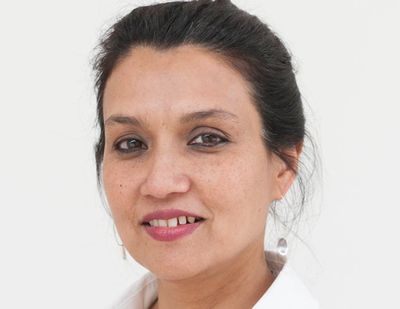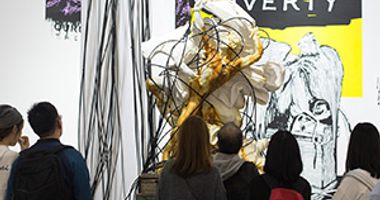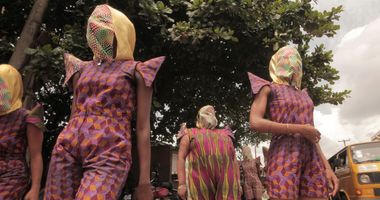Suhanya Raffel
Courtesy Suhanya Raffel.

Courtesy Suhanya Raffel.
Suhanya Raffel is Acting Director of the Queensland Art Gallery/Gallery of Modern Art in Brisbane, Australia, and responsible for creative and curatorial development of the exhibition and program initiatives.
Previously as Deputy Director she was instrumental in the realisation of major exhibitions including Andy Warhol in 2007–08, The China Project in 2009 and 6th Asia Pacific Triennial of Contemporary Art in 2009–10.
Raffel also oversaw the implementation of Art, Love and Life: Ethel Carrick and E. Phillips Fox; 21st Century: Art in the First Decade; both Queensland Art Gallery initiatives; and Land, Sea and Sky: Contemporary Art of the Torres Strait Islands; a Queensland Art Gallery and Southbank Cultural Precinct partnership; Yayoi Kusama: Look Now, See Forever, was a Queensland Art Gallery initiative with the Kusama Studio in Tokyo; Matisse: Drawing Life, co-organised with Art Exhibitions Australia and the Bibliothèque Nationale de France, Paris; Portrait of Spain: Masterpieces from the Prado was co-organised with Art Exhibitions Australia and the Museo Nacional del Prado, Madrid, and the forthcoming 7th Asia Pacific Triennial of Contemporary Art, is a Queensland Art Gallery initiative.
Raffel is a council member of the Asian Art Council, Guggenheim Museum, New York, USA, is on the board of the Australia-China Council, Department of Foreign Affairs and Trade, Canberra and the board of Griffith University's Asia Institute, Brisbane; has worked in the arts for over 20 years, and writes and lectures regularly in Australia and internationally.
As the APT sits within a museum, rather than starting with a clean slate each time, it is always in dialogue with its history.
OAPT7 will present works by 75 artists from 27 countries across Asia Pacific. What are the challenges in working with so many artists across such geographically diverse locations?
SRAs with any large international exhibition, there are challenges, but over 20 years, we have developed significant expertise and networks on the ground that assist significantly with complex logistical and cultural negotiations.
The APT is developed through intensive research, travel and working with a range of colleagues throughout the region, who include artists, curators and galleries, as well as diplomatic agencies, companies and experts from different fields.
OWhat differentiates APT from other regional arts events such as the Guangzhou Triennial and Singapore Biennale and indeed to Australian events such as the Sydney Biennale?
SRThere are several differences. Though the geographical scope of the APT may vary, it remains committed to investigating the contemporary art of Asia, the Pacific, and Australia. Unlike many other recurring exhibitions, there is no single artistic director—the curatorial structure of each edition of the APT is collaborative and includes QAGOMA staff as well as external co-curators.
As the APT sits within a museum, rather than starting with a clean slate each time, it is always in dialogue with its history. This museum base has also enabled a collecting focus for the APT, which is unique in the region and has enabled the Gallery to develop a significant collection of Asian and Pacific contemporary art.
OAPT7 marks the 20th anniversary of the APT series. Has the focus for the Triennial changed during the last two decades?
SRThe focus both has and hasn't changed. Certainly the geographical scope has expanded, in APT1 for example Asia was limited to East and Southeast Asia and the Pacific encapsulated New Zealand, PNG and Australia. And curatorial models have come and gone—we no longer think of hanging all the artists from a particular country together, for example. But the focus on Asia and the Pacific, and where Australia sits within that nexus, has remained solid throughout.
Australians increasingly understand that regional engagement is our future, and the APT has been an important part of this process. This is the place to do it, and to be surprised, entertained and challenged at the same time.
OSince the APT series began there has been a phenomenal increase interest in art from the Asia Pacific region, which the APT series can take some credit for. Is this reflected in attendance of the event ? How many people attend the Triennial?
SRAttendance has grown substantially with each edition. 60,000 people saw APT1, while attendance at APT6 topped half a million. There are a range of factors involved with this—a growing audience for contemporary art generally, and the special role QAGOMA plays in Brisbane—but it is entirely in keeping with the times.
Australians increasingly understand that regional engagement is our future, and the APT has been an important part of this process. This is the place to do it, and to be surprised, entertained and challenged at the same time.
OQAG runs a dynamic education program. What role does education play in the APT?
SREducation is central to the visitor experience of APT. We work on a number of levels to ensure that people have the information they need. We have an ongoing program of artist and curator talks and tours; we work with schools and other groups; we have extensive online resources; and through the Kids' APT we work closely with artists to develop art works and interactive projects to introduce children to the artists' ideas and the diverse places they come from. And we ourselves are consistently being educated as we work on each APT.
OWhat will be the special focus for APT7?
SRAPT7 has no overarching theme, but it does have a number of focuses. We have the largest representation ever of art from Papua New Guinea. We also profile the exciting new generations of artists emerging in Vietnam and Indonesia, and new works by five Aboriginal Australian artists.
We have a special focus presentation on art from West Asia. And we look back at 20 years of the APT through artist projects and archival presentations. That's just the start of course!
OWhat special highlights can we look forward to?
SRHighlights will include a major commission by leading Chinese artist Huang Yong Ping, which transforms the QAG Watermall with a large-scale sculpture. A stunning display of performance masks and objects and structures based on spirit houses from PNG dominate the foyer spaces of GOMA. And the Kids' APT hosts some wonderful artist projects, yet again. —[O]















































































































































































